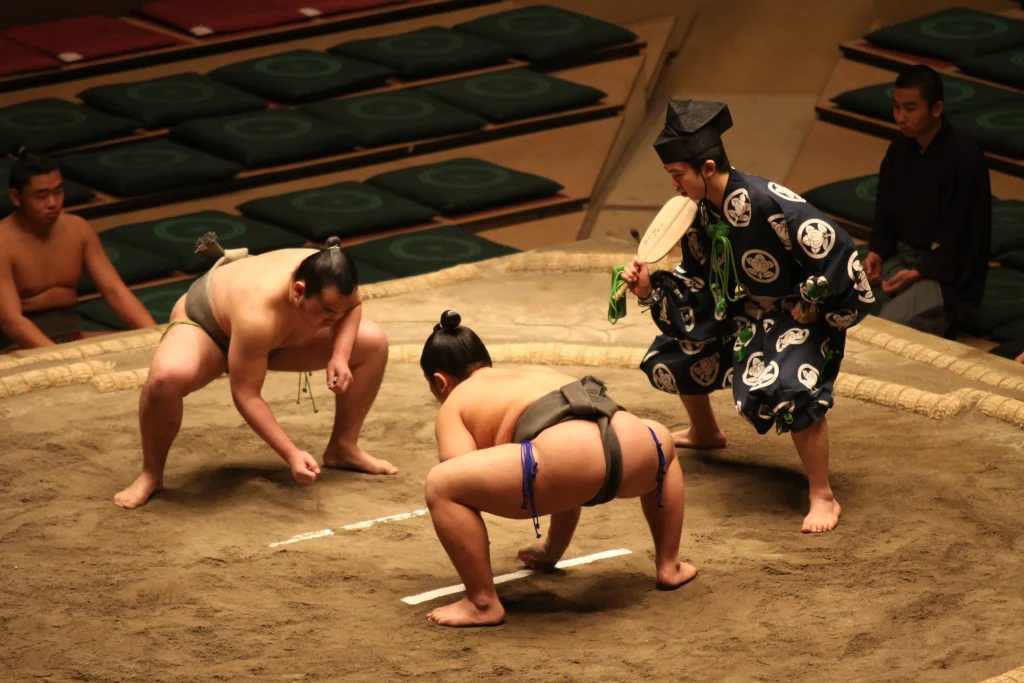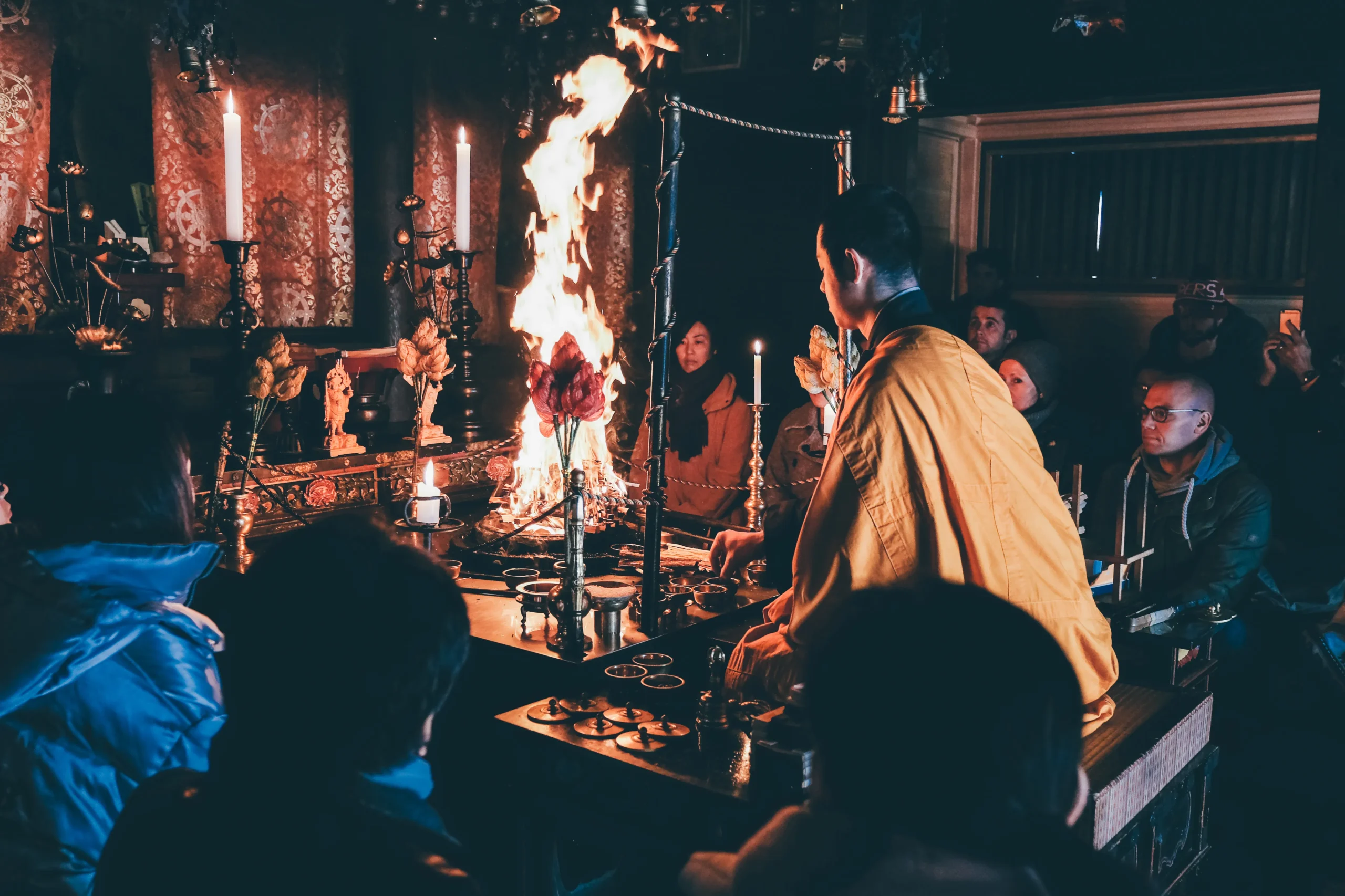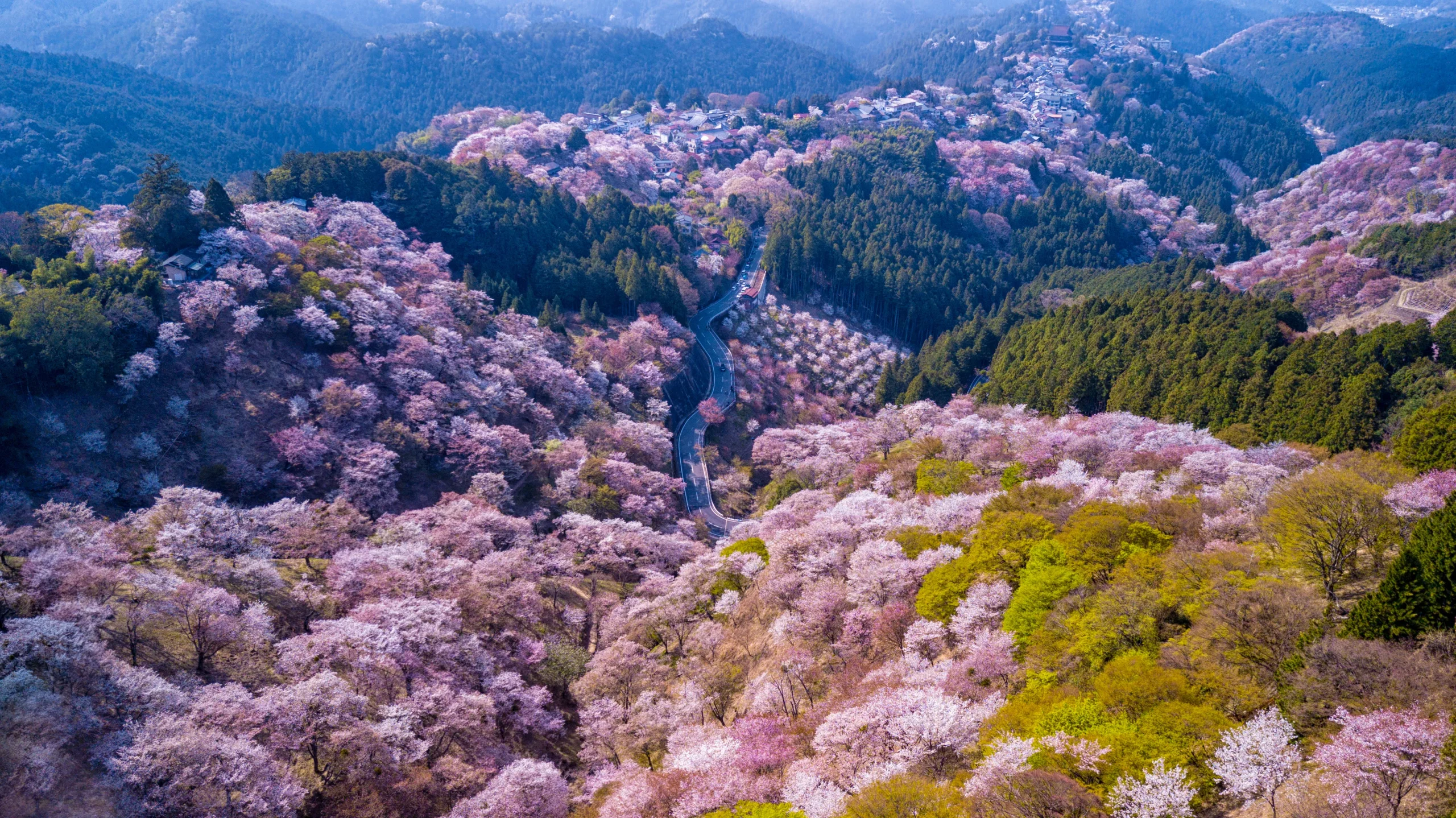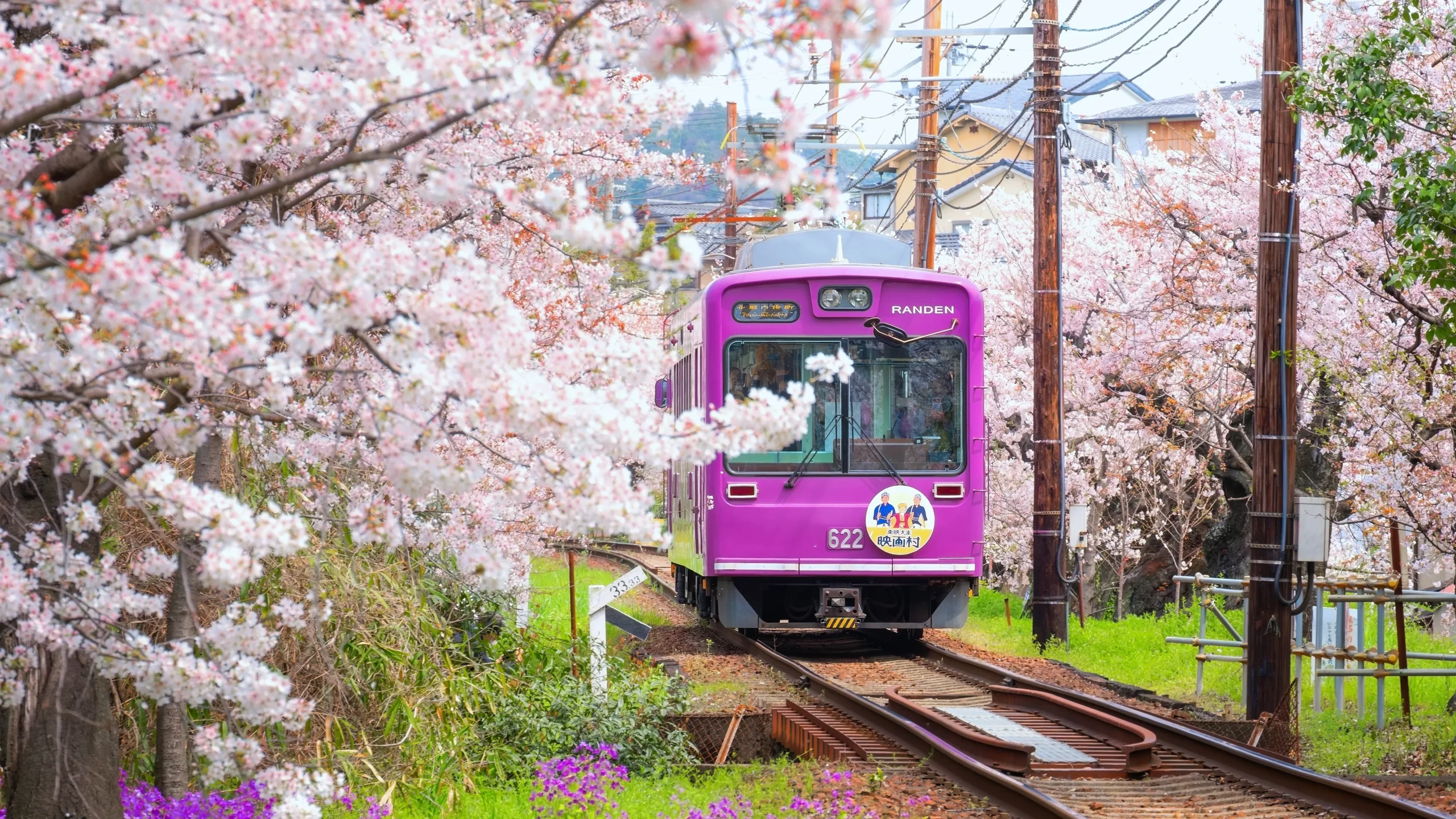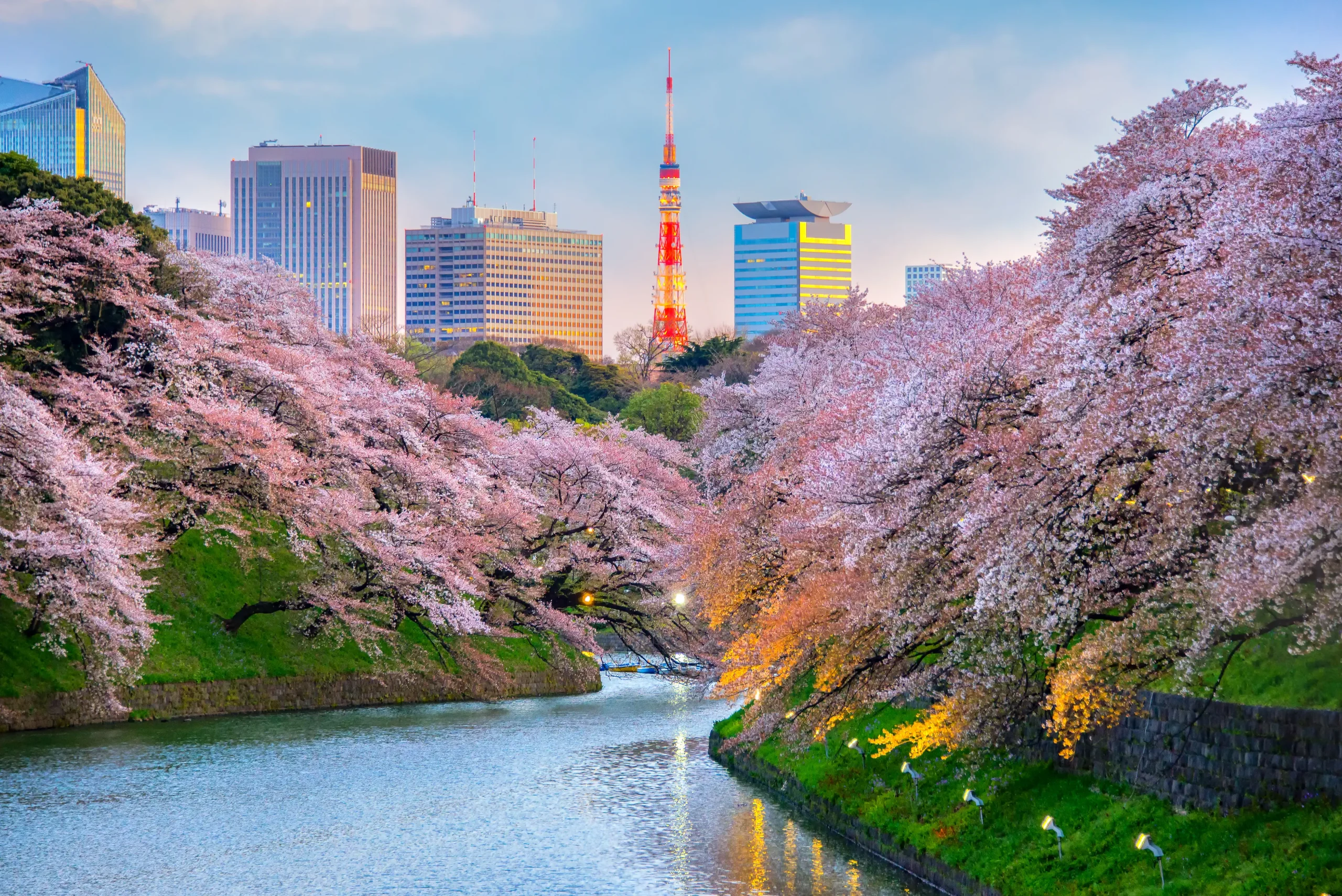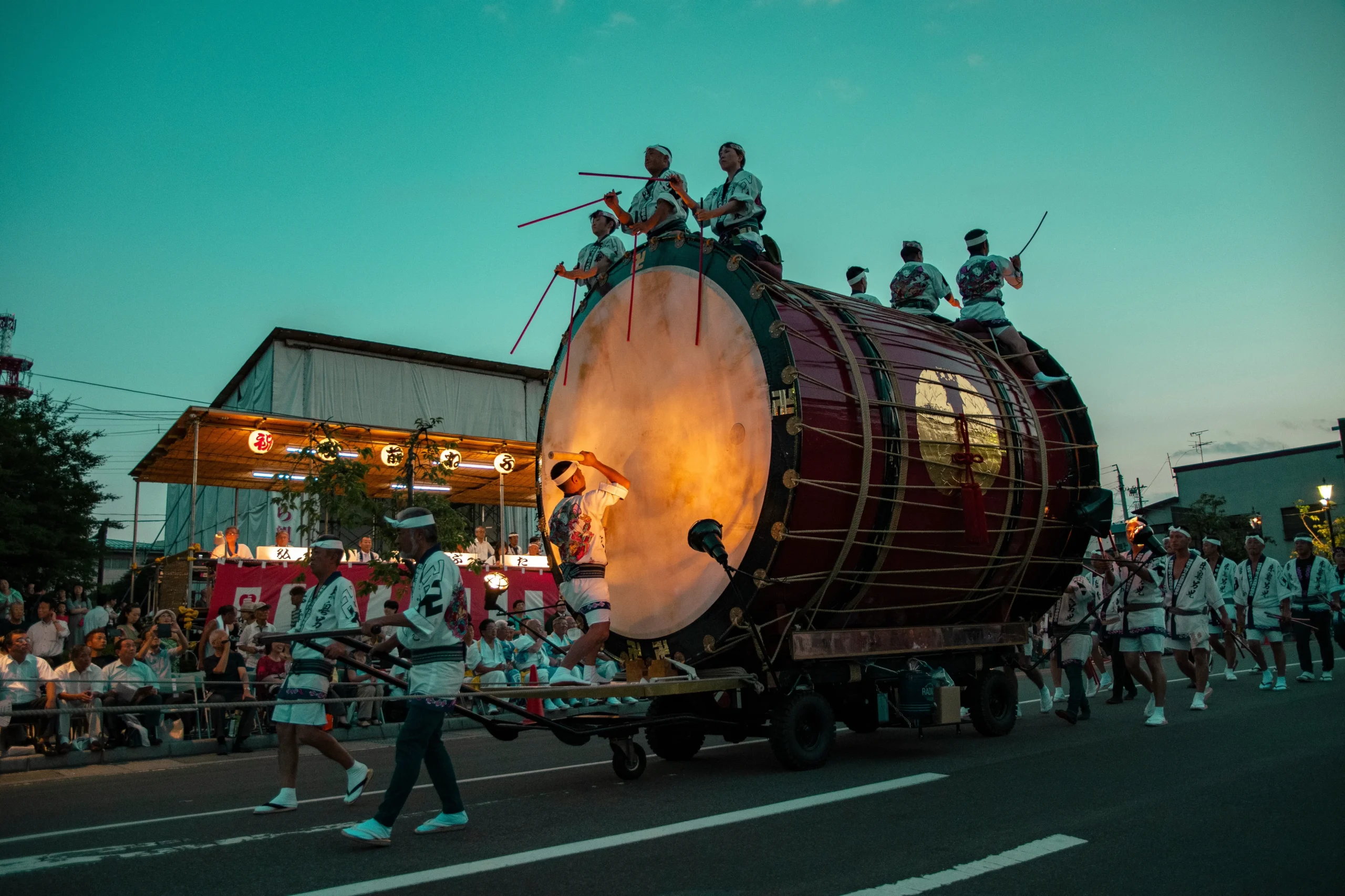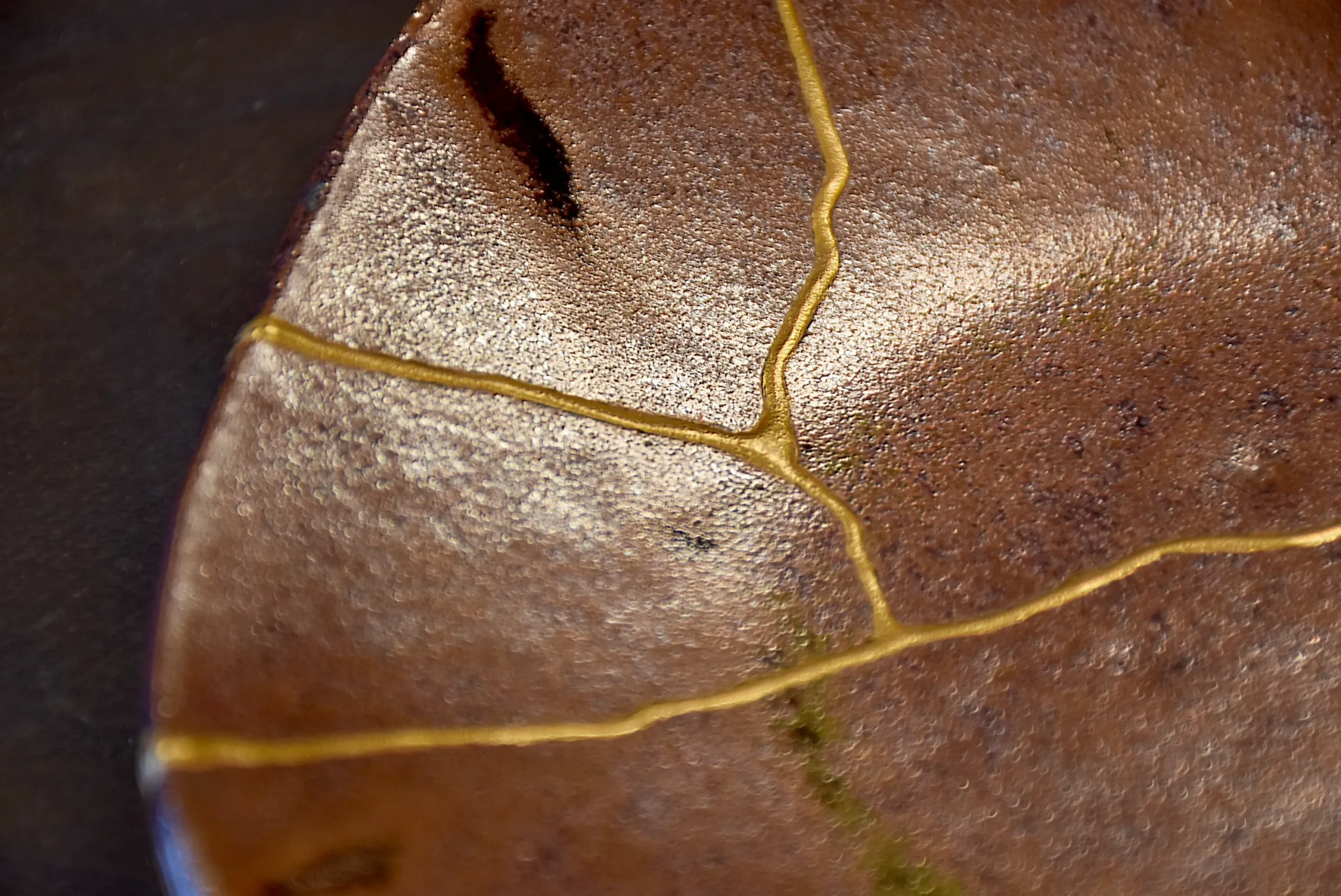Sumo is more than a sport—it’s a living tradition shaped by centuries of ritual and belief. Rooted in Japan’s ancient Shinto religion, sumo combines athletic competition with spiritual ceremony. Every action in the ring, from the salt toss to the pre-bout stomps, reflects cultural meaning and time-honored symbolism.
If you’re planning to attend a sumo match, this guide will walk you through what to expect. You’ll learn how the tournaments are scheduled, how matches unfold, and what rules define victory. We’ll also explain the customs that surround the event, from seating to cheering.
Even if you’ve never seen a match before, understanding the cultural background behind sumo will help you see it in a new light. Once you know what each gesture means and why the wrestlers perform them, the experience transforms—from watching a fight to witnessing a sacred ritual in motion.
Annual Schedule of Grand Sumo Tournaments and Exhibition Tours
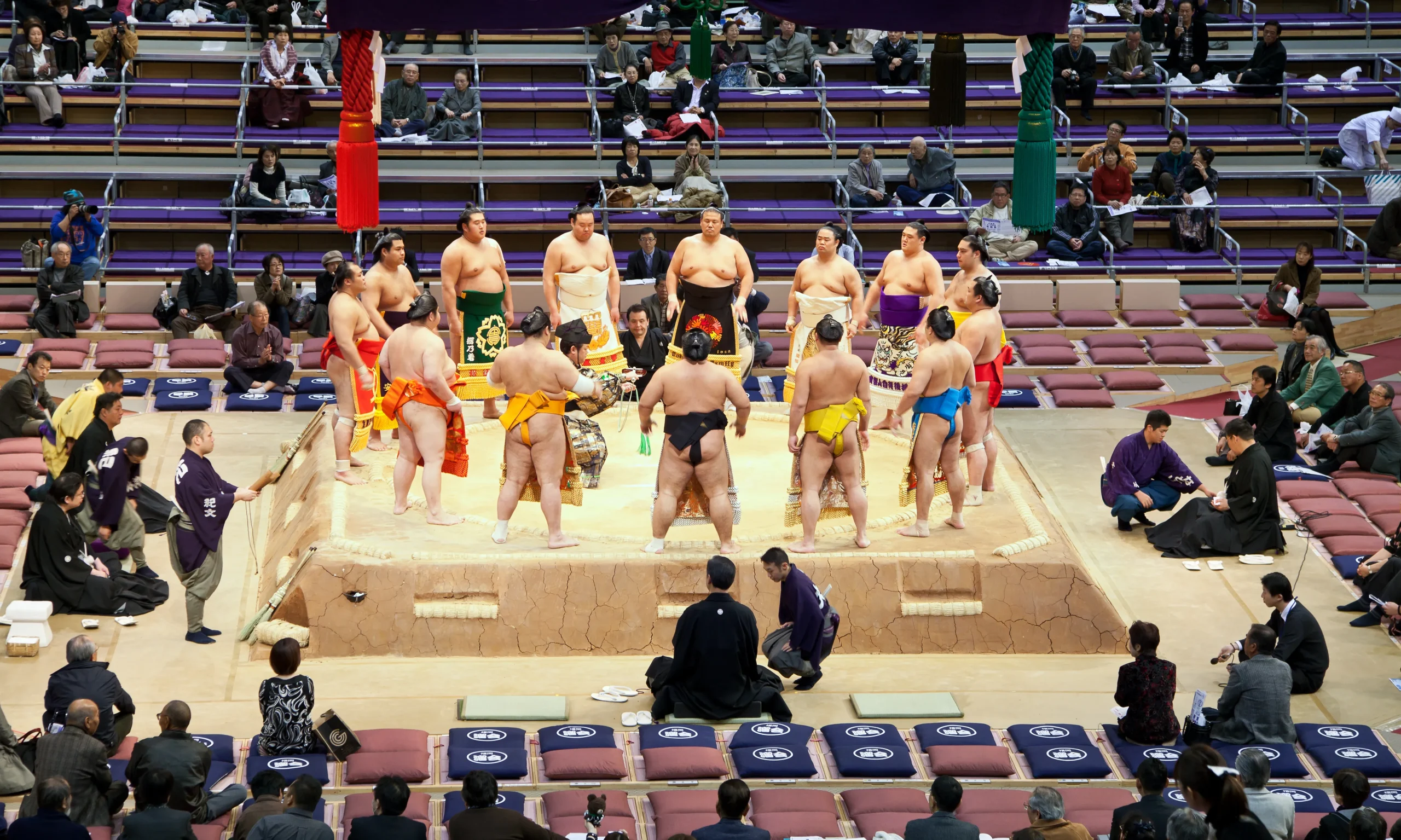
Grand Sumo Tournaments – Honbasho
Honbasho refers to the official sumo tournaments that directly impact a wrestler’s ranking. These tournaments are held six times a year, each lasting 15 days. The tournaments take place in different cities across Japan: Tokyo hosts the events in January, May, and September; Osaka in March; Nagoya in July; and Fukuoka in November.
Sumo Exhibition Tours – Jungyo
Jungyo are special sumo events held four times a year, taking place in various regions across Japan during even-numbered months when official tournaments are not in session. These tours aim to bring the excitement of sumo to different parts of Japan while promoting regional engagement. Unlike official tournaments, jungyo allows fans to experience sumo up close, interact with wrestlers, and enjoy unique local festivities.
For detailed schedules, please check the Japan Sumo Association’s official website.
How to Buy Grand Sumo Tickets
Tickets for Grand Sumo tournaments typically go on sale about one to three months before each event. Both pre-sale and general ticket options are available.
You can purchase tickets online through services like Ticket Oosumo and Ticket Pia, or in person at convenience stores across Japan.
If seats are still available, you can also buy tickets at the venue on the day of the event. However, these are limited—and popular match days often sell out—so booking in advance is strongly recommended to secure a good seat.
Where Grand Sumo Tournaments Are Held in Japan

Grand Sumo tournaments are held six times a year at four main halls across Japan: Ryōgoku Kokugikan in Tokyo, Edion Arena in Osaka, IG Arena in Nagoya, and Fukuoka Kokusai Center in Fukuoka.
The Tokyo hall, the Osaka hall, and the Nagoya hall are all conveniently located within a five-minute walk from the nearest train station, making them easily accessible. The Fukuoka hall is a bit farther, but still walkable—about 15 minutes from the closest station.
Attending a tournament at any of these halls is more than just watching a match. It’s a chance to step into the world of sumo and immerse yourself in one of Japan’s most powerful cultural traditions.
Seating Options for Grand Sumo Tournament
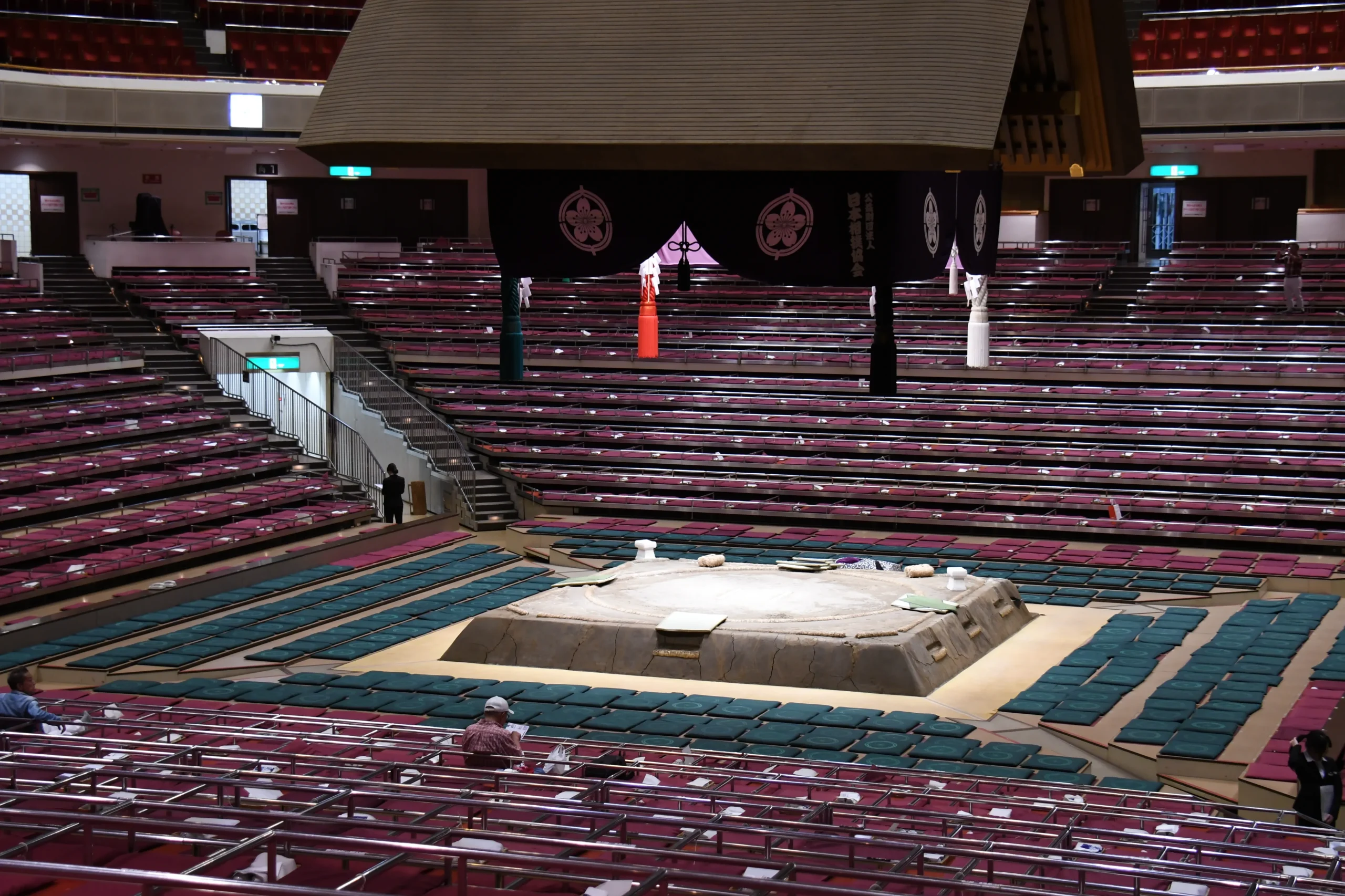
Each sumo hall is built with the dohyō (sumo ring) at the center, creating a circular layout that allows spectators to feel close to the action from any seat.
There are three main types of seating, each offering a different viewing experience:
- Tamari-seki are ringside seats located closest to the dohyō. These offer the most immersive experience—you can hear the wrestlers’ breath, feel the thud of impact, and witness every detail up close.
- Masu-seki are box seats, which are square floor sections for two to four people. These are popular with families and groups of friends, and it’s common to enjoy snacks or drinks while watching the matches.
- Chair seating is the most affordable option and ideal for first-time visitors. Located in the upper tiers of the arena, these standard seats still provide a clear view of the action at a reasonable price.
No matter where you sit, the layout of the hall ensures you can fully enjoy the drama and power of each match.
A Day at a Grand Sumo Tournament
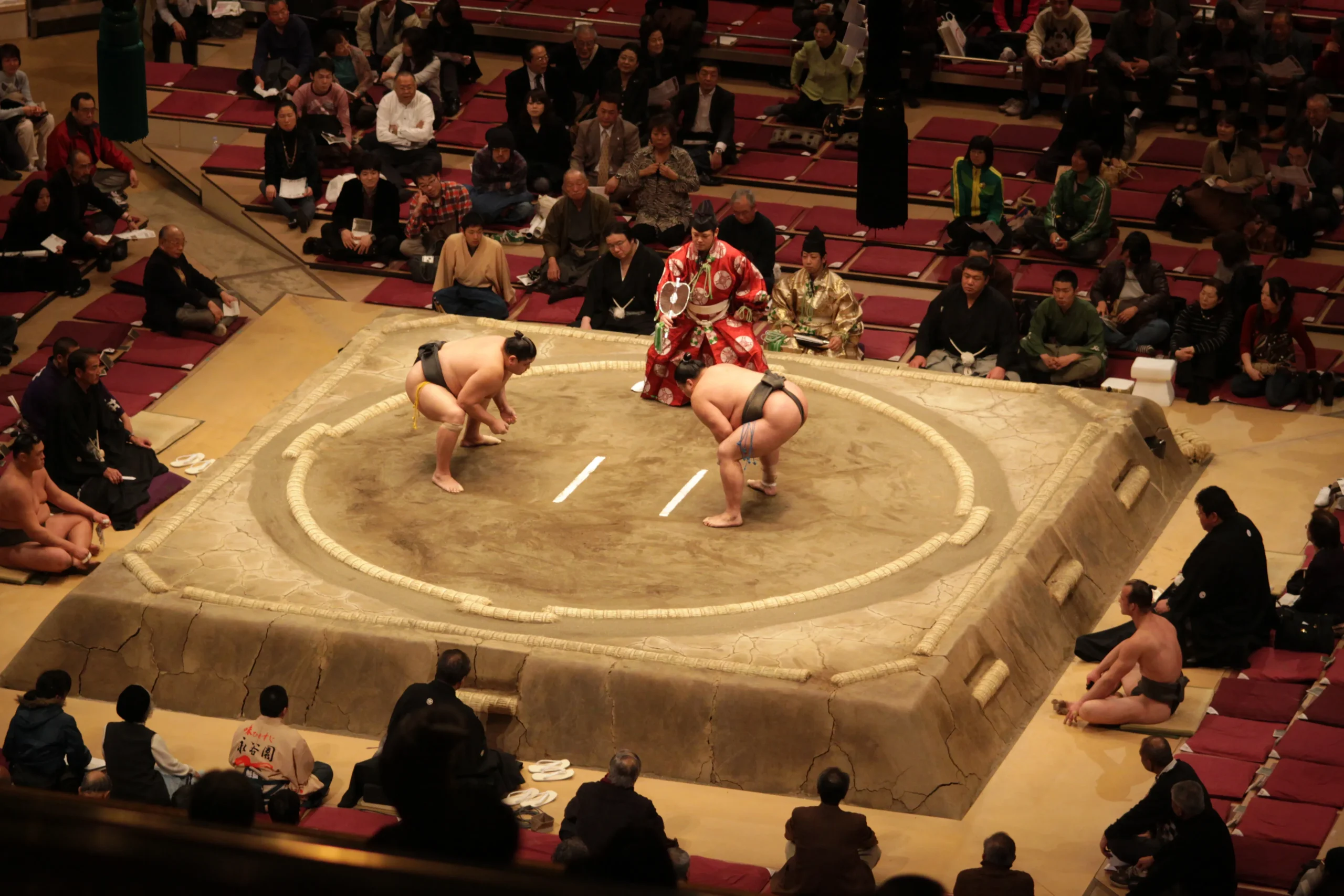
Watching a Grand Sumo tournament is an all-day experience, offering non-stop excitement from morning to evening. Matches progress in intensity throughout the day, building up to the highly anticipated bouts of top-ranked wrestlers.
Daily Schedule of a Sumo Tournament
- 8:30 AM – The tournament begins with matches featuring young wrestlers from the lower divisions. The atmosphere gradually builds as the competition progresses.
- 2:45 PM – The jūryō division wrestlers, known as “sekitori,” make their ceremonial ring entrance, marking the start of the more intense matchups.
- 3:30 PM – A short intermission called “nakairi” allows spectators to take a break, enjoy a meal at the sumo teahouses, or browse souvenir shops for sumo-related merchandise.
- 3:55 PM – The makuuchi division wrestlers enter the ring, followed by the grand entrance of the yokozuna, creating a moment of heightened anticipation.
- 4:10 PM – The makuuchi division matches begin, featuring the top-ranked wrestlers in fierce and dramatic bouts.
- 6:00 PM – The day concludes with the “yumitori-shiki” (bow-twirling ceremony), a traditional finale that marks the end of an exhilarating day of sumo.
On the first day and final day of the tournament, special ceremonies add an extra layer of grandeur, such as the Championship Trophy Presentation and the “Kami-okuri” ritual, where the spirit of the tournament is symbolically sent off. Attending a sumo tournament is more than just watching a sport—it’s a deep dive into centuries-old traditions, cultural rituals, and the sheer intensity of sumo wrestling. Whether you stay for the full day or just the main events, the experience is sure to be unforgettable.
Basic Rules and Tips for Sumo Matches

Basic Rules of Sumo
Sumo matches take place in a circular ring called the dohyō. Each bout begins with a forceful clash known as the tachi-ai, where both wrestlers launch into one another with explosive energy. The objective is simple: defeat your opponent by either pushing them out of the ring, making any part of their body other than the soles of their feet touch the ground, or winning by default if they commit a foul.
While the rules may seem straightforward, sumo is a deeply strategic sport with strict regulations. Wrestlers may only use their palms and fingers to push or throw. Kicks, hair-pulling—especially grabbing the opponent’s topknot (mage)—and other illegal moves, known as kinjite, result in immediate disqualification.
Each match is officiated by a gyōji (referee), who makes the initial decision. If there’s any doubt or disagreement, a system called mono-ii comes into play. In this process, ringside judges and standby wrestlers review the decision, often using video footage. The final ruling is delivered by the chief judge, or shimpan-chō, after consultation.
While sumo has its own set of rituals and terms, its simplicity and intensity make it easy to enjoy—even if you don’t speak the language.
Tips for Watching Sumo Matches Like a Local
Attending a Grand Sumo tournament is not just about watching the matches—it’s also about respecting the atmosphere and traditions that make the experience special. To ensure that everyone can enjoy the event, there are a few important rules and customs to keep in mind.
- No outside food or drinks allowed – Please enjoy only the food and beverages available inside the venue.
- Cheering loudly is prohibited – Applause is welcome, but loud shouting may disrupt the wrestlers’ concentration.
- Sit only in your assigned seat – Even if nearby seats appear empty, remain in the seat indicated on your ticket.
- Do not move or relocate seat cushions – In box seating areas, cushions are positioned for safety and comfort and should not be rearranged.
- Regulated exit procedures are in place – After the final match, staff will guide spectators to exit in stages, starting from the first floor.
- No re-entry once you leave the hall – You cannot return once you exit, so plan accordingly.
By observing these simple rules, you’ll help maintain the dignity of the event—and enjoy a smoother, more immersive sumo experience.
Sumo Tournament 2026 in Japan
The official schedule for the 2026 Grand Sumo tournaments has already been released. Below is the tournament schedule for 2026:
| Tournament | Venue | Location | First Day | Final Day |
|---|---|---|---|---|
| The January Tournament | Kokugikan | Tokyo | January 11 | January 25 |
| The March Tournament | EDION Arena Osaka | Osaka | March 8 | March 22 |
| The May Tournament | Kokugikan | Tokyo | May 10 | May 24 |
| The July Tournament | IG Arena | Aichi | July 12 | July 26 |
| The September Tournament | Kokugikan | Tokyo | September 13 | September 27 |
| The November Tournament | Fukuoka Kokusai Center | Fukuoka | November 8 | November 22 |
Reference: Japan Sumo Association, Ticket Information – Grand Tournament Schedule
For the January tournament, for example, ticket sales are expected to begin in December 2025. If you would like to create a tailor-made tour that includes watching a sumo tournament, feel free to contact ENJYU JAPAN here.
Sumo Events in Japan: More Than Just Tournaments
In addition to official events like the grand sumo tournaments, honbasho, and regional exhibition tours, jungyō, there are many other ways to experience sumo culture in Japan. Here are four unique activities that let you connect with the sport on a deeper level.
Morning Practice Visits
Watching morning training at a sumo stable offers a rare behind-the-scenes look at the daily lives of wrestlers. You’ll see not only practice bouts, but also stretching, footwork drills, and other routines that aren’t visible during tournaments. This close-up view has a raw intensity that makes it a favorite among both domestic and international visitors.
In Tokyo, most stables are concentrated in the Ryōgoku area of Sumida Ward—a neighborhood steeped in sumo history. As you explore, you can also enjoy the traditional Edo-period atmosphere, complete with historical landmarks and charming streetscapes.
Sumo Restaurants
Food is an essential part of sumo culture, and no dish is more iconic than chanko-nabe—the hearty hot pot traditionally eaten by wrestlers. In cities like Tokyo and Osaka, you’ll find many restaurants run by former wrestlers who serve their own take on this classic meal.
Some venues go a step further by offering a full themed experience. At so-called “sumo restaurants,” guests can enjoy chanko-nabe alongside live sumo performances in a setting modeled after a sumo stable. These restaurants are a fun, low-pressure way to experience sumo culture without attending a formal match.
Hands-On Sumo Experiences
If you want to try sumo for yourself, consider joining a sumo experience program. Under the guidance of a former wrestler, you’ll learn the basic movements and how to show respect in the ring. Participants even have the chance to wear a mawashi belt and step into a ring for a mock bout.
This interactive experience is not only fun but also offers insight into the physical discipline and traditions behind the sport—making it a memorable way to engage with sumo beyond simply watching.
Sumo Museum
For those interested in sumo’s history, the Sumo Museum in Tokyo’s Ryōgoku district is a must-visit. Though compact in size, the museum features a rich collection of exhibits, including photos of legendary wrestlers, elaborately decorated kesho-mawashi (ceremonial aprons), and historical rankings.
The exhibitions change with the seasons, so there’s always something new to discover. A visit here offers a deeper understanding of sumo’s place within Japan’s cultural heritage.
Summary
This article has introduced the sumo season, basic rules, and spectator ways to help you get the most out of your sumo experience. Grand Sumo tournaments, held six times a year in odd-numbered months, form the heart of the sumo calendar. But official tournaments aren’t the only way to enjoy sumo. You can also explore the sport through regional exhibition tours, early-morning training sessions at sumo stables, and special sumo-themed events held throughout Japan.
Whether you choose to attend a tournament, observe a practice, or catch an exhibition match, seeing sumo live offers a powerful connection to Japan’s rich cultural heritage. Don’t miss the chance to witness this centuries-old tradition up close—and take home unforgettable memories from your visit.
Curious about experiencing sumo up close—or looking for something a little different? ENJYU JAPAN is here to help you find the right opportunity.
Our travel planner will work closely with you to create a private holiday tailored to your interests—and we’d be happy to help you discover the one that’s right for you. Let us know what you’re looking for using the inquiry form below!
